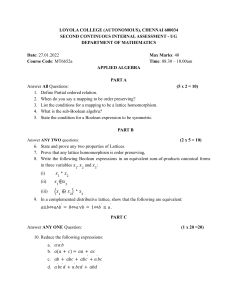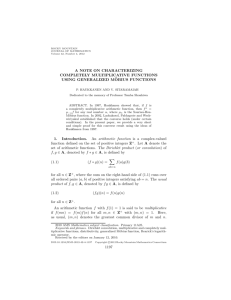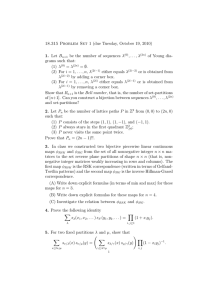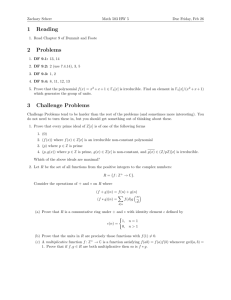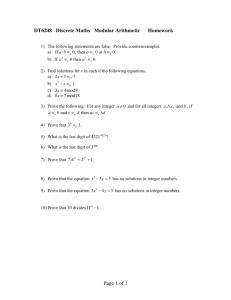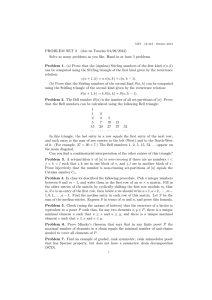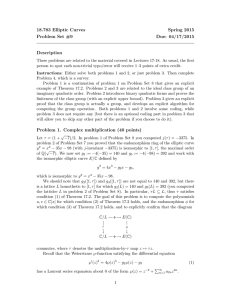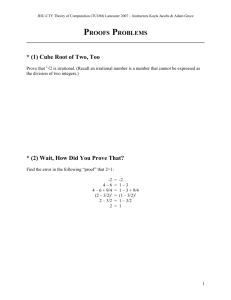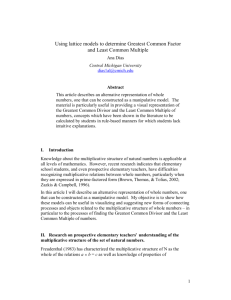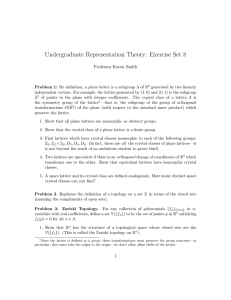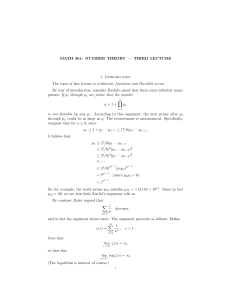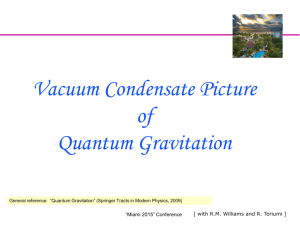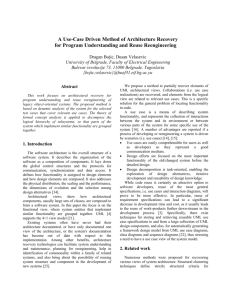Homework 3 - More Arithmetic Functions 1. Show that a (not
advertisement
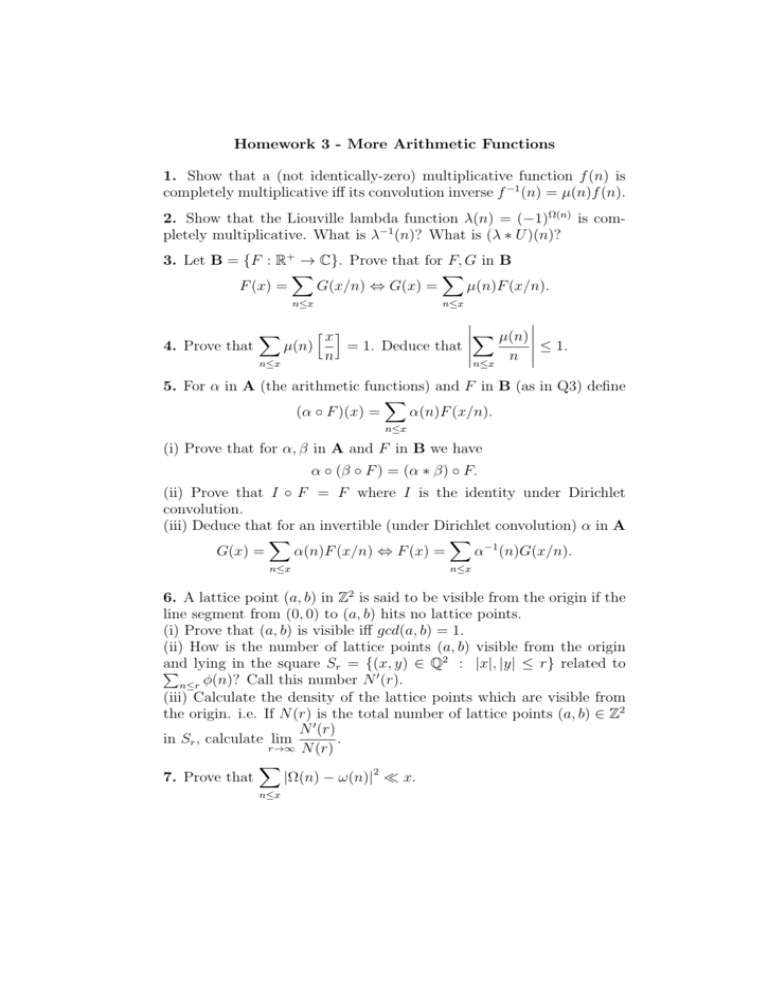
Homework 3 - More Arithmetic Functions
1. Show that a (not identically-zero) multiplicative function f (n) is
completely multiplicative iff its convolution inverse f −1 (n) = µ(n)f (n).
2. Show that the Liouville lambda function λ(n) = (−1)Ω(n) is completely multiplicative. What is λ−1 (n)? What is (λ ∗ U )(n)?
3. Let B = {F : R+ → C}. Prove that for F, G in B
X
X
F (x) =
G(x/n) ⇔ G(x) =
µ(n)F (x/n).
n≤x
n≤x
X µ(n) = 1. Deduce that 4. Prove that
µ(n)
≤ 1.
n
n n≤x
n≤x
X
hxi
5. For α in A (the arithmetic functions) and F in B (as in Q3) define
X
(α ◦ F )(x) =
α(n)F (x/n).
n≤x
(i) Prove that for α, β in A and F in B we have
α ◦ (β ◦ F ) = (α ∗ β) ◦ F.
(ii) Prove that I ◦ F = F where I is the identity under Dirichlet
convolution.
(iii) Deduce that for an invertible (under Dirichlet convolution) α in A
X
X
G(x) =
α(n)F (x/n) ⇔ F (x) =
α−1 (n)G(x/n).
n≤x
n≤x
6. A lattice point (a, b) in Z2 is said to be visible from the origin if the
line segment from (0, 0) to (a, b) hits no lattice points.
(i) Prove that (a, b) is visible iff gcd(a, b) = 1.
(ii) How is the number of lattice points (a, b) visible from the origin
and
y) ∈ Q2 : |x|, |y| ≤ r} related to
P lying in the square Sr = {(x,
0
n≤r φ(n)? Call this number N (r).
(iii) Calculate the density of the lattice points which are visible from
the origin. i.e. If N (r) is the total number of lattice points (a, b) ∈ Z2
N 0 (r)
in Sr , calculate lim
.
r→∞ N (r)
X
7. Prove that
|Ω(n) − ω(n)|2 x.
n≤x
